There are many looms that could fall into the “little loom” category.
Today I’m going to be talking specifically about the smallest rigid heddle looms available.
There are many reasons why weavers opt for a smaller loom. Some of these may include:
- Affordability – a small loom is also a smaller financial investment to get started with.
- Portability – you can literally pick these little looms up with one hand and take them with you
- Space – some people have very limited space for storing a loom.
- Testing it out – a small loom is a great way to test out weaving to see if it’s something you really want to pursue.
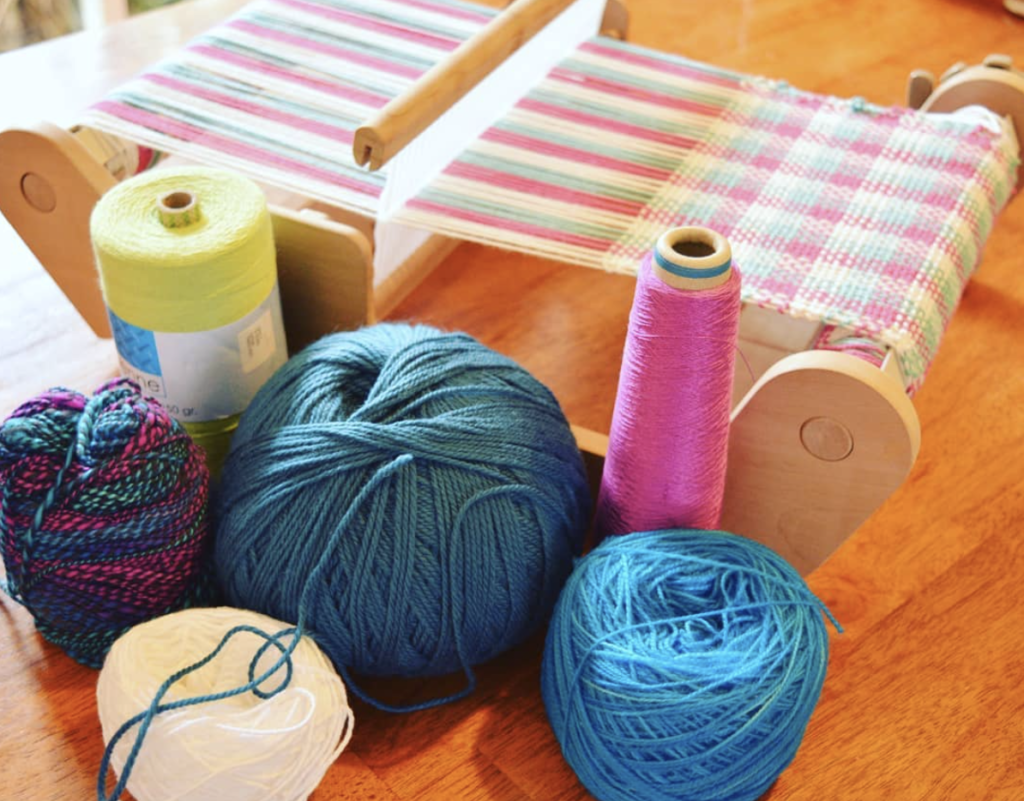
*This post contains affiliate links. For further information, please see my disclosure policy.
Many small loom weavers will later upgrade to a larger loom. Or some, (like myself!) will purchase a smaller loom later on, in order to have an extra loom on hand or just for sampling new ideas and designs.
Let’s have a look at the small rigid heddle looms currently available for purchase:
Ashford Sampleit 10″ (also comes in a 16″ weaving width)
Kromski Presto 10″ (also comes in a 16″ weaving width)
Schacht Cricket 10″ (also comes in a 15″ weaving width)
Beka beginners rigid heddle loom, available in 4″ and 10″ weaving width
I’ve come up with a list of finished items you can weave on a little loom as some ideas for getting started:
Samples
The number one function that a smaller loom serves is to make samples. If you are one of those people who think that sampling is a waste of time and yarn, I get it – I used to be exactly the same. But, throughout my weaving journey I have learned the true value of sampling before committing to a project.
In some cases, its actually a false economy to not sample and that is because the sample teaches you what you should and shouldn’t do for that project. In short, it guarantees the success of your project!
Clothing
You can make garments, even with a small loom, with a bit of creative design. Strips of woven cloth can be seamed together in order to make larger pieces of fabric, which can then be cut and sewn into garments. People often have the idea that only large, drapey garments (like a ruana) can be sewn with hand woven fabric, but that is not so. All kinds of clothing, including fitted pieces can be made, with a bit of planning ahead of time to ensure you are weaving an appropriate weight of fabric, with appropriate yarns for the garment you want to make.
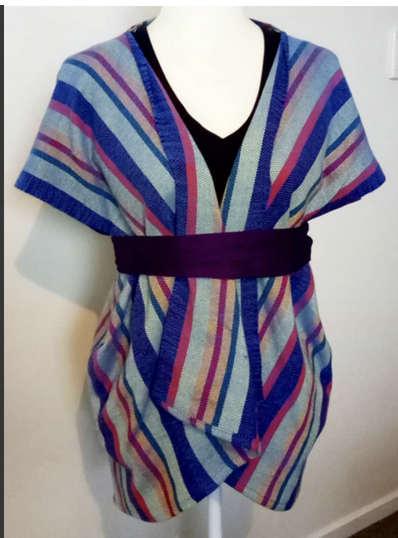
In my Rigid Heddle Garment making class, we weave and then sew a loose fitting, open front cardigan. The class is not specifically for small looms, but it is easy to see how you can build a garment by building panels to seam together. A woven fabric with vertical stripes incorporated into the design would be perfect for camouflaging seams.
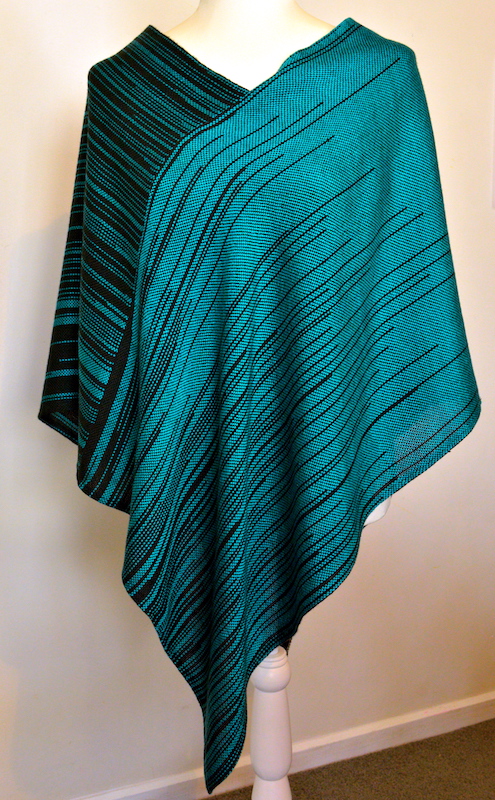
The Clasped Warp Quechquemitl class is another example of panels sewn together to construct a beautiful garment. Again, the class is not specific to small looms but the weaver could opt to weave 4 panels to join rather than the 2 demonstrated in the class.
The most obvious garment choice for a little loom would have to be a scarf, as you don’t need a wide width and you can wind on a warp that is long enough for one or two scarves.
Art
I have created a variety of art pieces on my 10″ Sampleit loom. A small loom is perfect for a petite sized wall hanging, tapestry or framed piece. I discovered an added bonus to my Sampleit for weaving art recently. When not in use, I store this loom by hanging it on the wall. I was working on some krokbragd recently and noticed when I hung the loom up for the day, that it was a perfect way to display the work on the wall while it’s being completed!
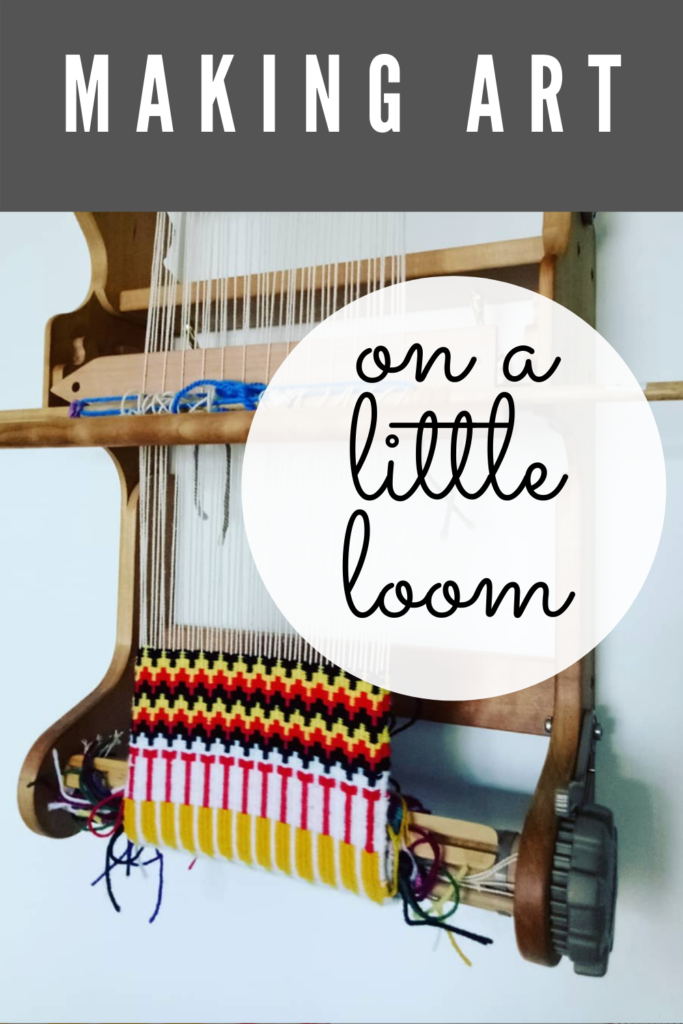
Another thing I have not yet done, but desperately want to, is to frame some of my smaller woven pieces. I love the way krokbragd looks in a beautiful frame.
Tapestry can also be woven on a little loom. You can see a few of my small tapestries in this post. I will freely admit that nowadays I weave tapestries almost exclusively on my Big Sister, but prior to the purchase of that loom I honed my tapestry weaving skills on my Sampleit. I even made a class about weaving Tapestry on a Rigid Heddle Loom!
Freestyle tapestries are great on a small rigid heddle, as they are more of an “anything goes” project. They can be very planned or completely unplanned. My Freestyle Tapestry series and Van Gogh Inspired Tapestry series are both great starting points for some inspiration.
Accessories and jewellery
You can weave some awesome gifts on your little loom. A bookmark is a quick project and a fantastic way to use up leftover yarn.
I wove a tapestry necklace on my tapestry loom, but the same could be done on a rigid heddle loom. A wrist cuff is a great small loom project and very straightforward to make.

I’m often asked if inkle bands can be woven on a rigid heddle. I have not done it myself, but I have seen bands woven by others. My advice would be – if you want to weave a lot of bands, make the investment in an inkle loom. They are quite affordable and they hold the amount of tension required for weaving really neat bands. Click here if you want to find out more about inkle weaving.
Notebook covers are fun and useful to weave. You can make them to fit your notebook, like I did for my Stashbuster Notebook tutorial series. You can also view that series here:
Some more accessory ideas could include:
A clutch, a purse or small bag, a phone case or wallet, glasses case, gadget case, pouches, or a drawstring bag.
Homewares
The range of projects you could complete in this category really narrow down to how comfortable you are with seams in your finished piece (though I will mention double width weaving shortly!)
Small items could include kitchen cloths, drink coasters, mug rugs, small placemats, teapot rests, and napkins and pot plant or coffee mug holders.

If you don’t mind the idea of seaming pieces together, you can expand on this list of projects to include:
Cushions and pillows, kitchen towels, table runners, throws and blankets. My Rainbow Blanket project is the perfect of example of how seaming panels together to make a larger project can really work. It was woven entirely on my 10″ Sampleit loom. It is lap blanket sized, but could easily be expanded to become bed sized! I woven panels and hand seamed them together.
Children
Options for woven items for children could include little hats, vests, pants, baby blankets, toys and plushies.
Double width
I couldn’t possibly finish up without mentioning that you have the ability to weave double width on your rigid heddle loom. For my 10″ Sampleit, this means that instead of the 10″ weaving width available, I would have 20″ instead! Just to temper that statement, this doesn’t include draw in, so the actual finished piece would be narrower than 20″ – but you get the idea. Weaving double width is just that – you increase the width of your finished item to twice the size it would have been.
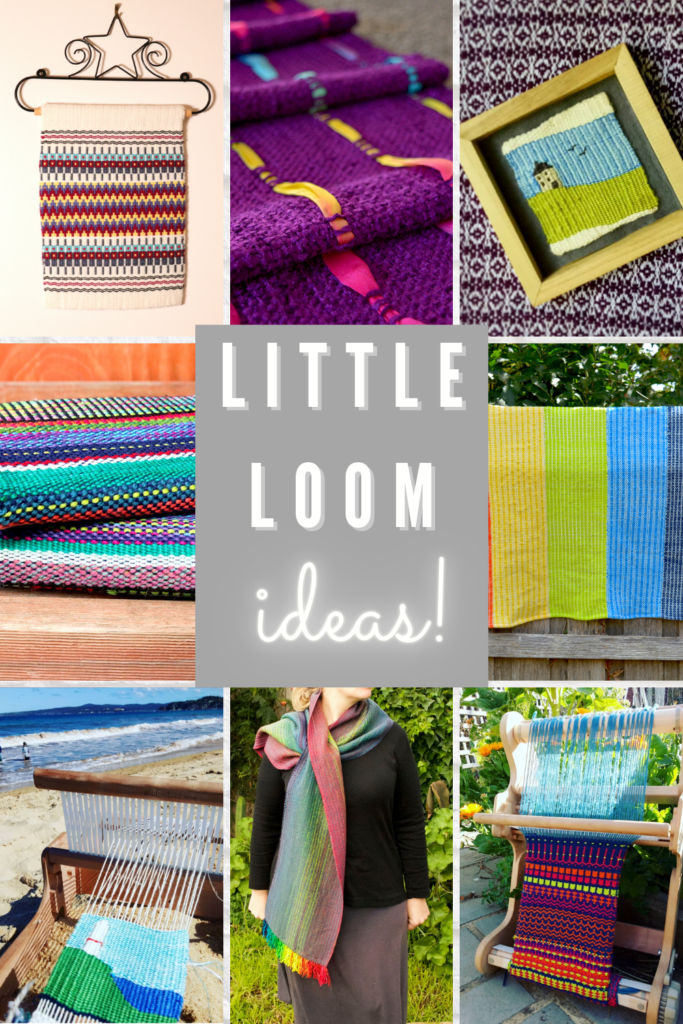
This is a great option to small loom weavers who do not have the option of upgrading to a larger loom but would love to weave larger items. Does double width weaving sound like some kind of sorcery to you? Well, it’s actually very practical and with the right steps, is very doable. I have some resources that can help you get started:
Weaving with Two Heddles Online Class
Doubleweave Baby Blanket Online Class
I’m sure I haven’t covered all the ideas that are possible on a smaller loom, so if you have any other thoughts for projects, please share with other readers in the comments below.
Until next time…
Happy Weaving!
